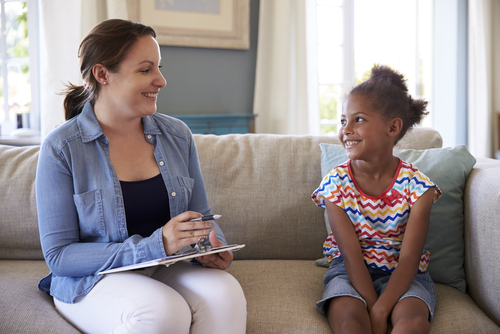Dialectical behavior therapy (DBT) is an evidence-based psychotherapy that emphasizes the psychosocial aspects of treatment. Psychologist Marsha M. Linehan developed DBT in the late 1980s as a means to more effectively treat chronically suicidal individuals diagnosed with borderline personality disorder (BPD). It is founded on the principles of cognitive-behavioral therapy (CBT), utilizing standard CBT techniques for emotional regulation and reality testing, and combines concepts derived from Buddhist meditative practice such as awareness, mindfulness, and attentiveness to current situations and emotional experiences to encourage acceptance. Dialectical behavior therapy focuses on teaching four behavioral skill modules: core mindfulness, distress tolerance, interpersonal effectiveness, and emotion regulation. Currently, DBT remains the gold-standard form of treatment for individuals with BPD and has also proven to be a successful treatment method for individuals experiencing other mental health illnesses such as eating disorders, post-traumatic stress disorder, generalized anxiety disorder, dissociative disorders, depression, substance use disorder, and more.
DBT-C
DBT for children (DBT-C) is an adapted version of standard DBT that is specifically geared toward treating pre-adolescent children. According to Behavioral Tech, DBT-C was developed to “address treatment needs of pre-adolescent children with severe emotional dysregulation and corresponding behavioral discontrol.” Emotional dysregulation is a term used within the mental health field to denote irrational, poorly modulated emotional responses. DBT-C relies on the same principles, theoretical model, and therapeutic strategies of standard DBT. However, the DBT-C curriculum is re-framed in a way that considers and accommodates the developmental and cognitive levels of pre-adolescent children and provides age-appropriate services. Depending on the needs of the child a variety of creative play-based DBT activities may be incorporated throughout the DBT-C process. Examples of these types of activities can be found in different supplemental resource books, such as:
- Creative Play-Based DBT Activities for Children and Their Caregivers by Kellie Giorgio Camelford; Krystal Vaughn, and Erin Dugan.
- DBT Therapeutic Activity Ideas for Kids and Caregivers by Carol Lozier
- Creative DBT Activities Using Music Interventions for Enhancing Engagement and Effectiveness in Therapy by Deborah Spiegel, Suzanne Makary, and Lauren Bonavitacola
- Creative Interventions for Challenging Children & Adolescents: 186 Techniques, Activities, Worksheets & Communication Tips to Change Behaviors by Susan Epstein
Like standard DBT, the components of DBT for children and preadolescents include individual therapy, group skills training sessions, working directly with parents, and as-needed 24-hour phone coaching to provide additional support to children and their families. As is articulated in Behavioral Tech, the goal of DBT-C is to eliminate the “harmful transaction between a child and an environment and replace it with an adaptive pattern of responding to ameliorate presenting problems, as well as to reduce the risk of associated psychopathology in the future.” Through DBT-C a young person will learn a variety of adaptive coping skills and effective problem-solving strategies. DBT-C also helps parents learn to create and maintain a supportive, validating, and stabilizing environment. In terms of integrating creative play based DBT activities, merging the facilitative powers of DBT with creative play allows children to practice using DBT skills to work through and process their internal conflicts in a non-threatening, familiar fashion. Combining the therapeutic powers of play while utilizing these skills allows children to gain a better understanding of their world.
The information above is provided for the use of informational purposes only. The above content is not to be substituted for professional advice, diagnosis, or treatment, as in no way is it intended as an attempt to practice medicine, give specific medical advice, including, without limitation, advice concerning the topic of mental health. As such, please do not use any material provided above to disregard professional advice or delay seeking treatment.


